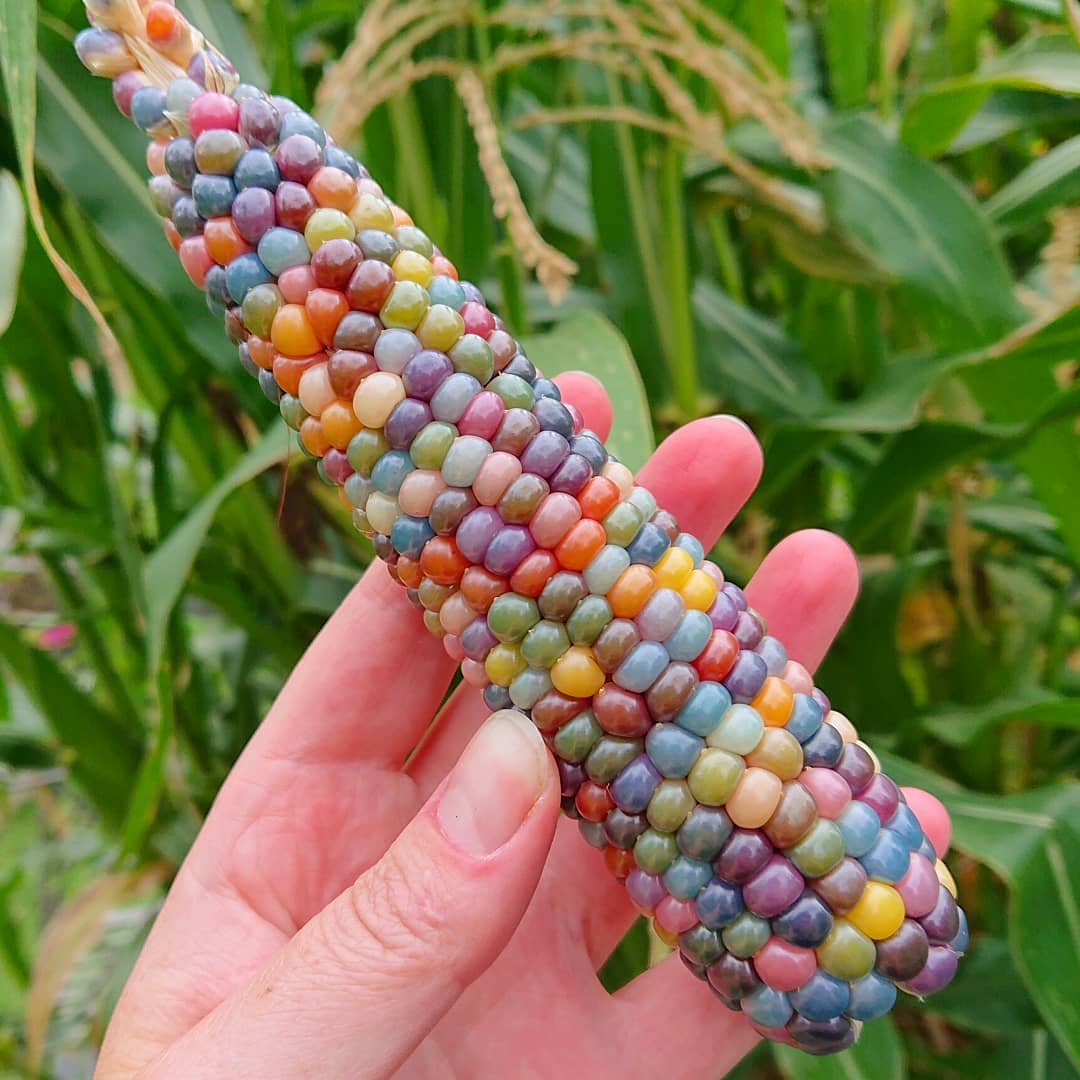If you’ve ever marveled at the sight of brilliantly colored corn kernels that seem to shimmer like precious gems, you’ve likely encountered Glass Gem corn. This extraordinary variety of corn has captured the imagination of gardeners, artists, and nature enthusiasts around the world.
In this article, we’ll delve into the fascinating world of Glass Gem corn, exploring its history, characteristics, and how to grow it.
The Origin and History of Glass Gem Corn
Glass Gem corn is not a product of genetic modification or a recent hybrid creation. Instead, it’s the result of careful selection and breeding by a Cherokee farmer named Carl Barnes, who lived in Oklahoma. Barnes had a deep appreciation for heirloom corn varieties and sought to preserve them while creating something truly unique.
Over the course of many years, he crossbred different corn strains, selecting for the most vibrant and colorful kernels. His dedication and skill led to the creation of Glass Gem corn.
How does Glass Gem corn differ from normal corn?
Glass Gem corn differs from normal or traditional corn varieties in several key ways, primarily in its appearance and intended use. Here are the main differences:
Colorful Kernels:
The most striking and distinguishing feature of Glass Gem corn is its colorful kernels. While traditional corn varieties typically have yellow or white kernels, Glass Gem corn displays a wide range of vibrant and translucent colors, including shades of red, blue, green, yellow, and purple. These multicolored kernels are what give it its “glass-like” or gem-like appearance.
Ornamental Purpose:
Glass Gem corn is primarily grown for ornamental purposes and is often used for decoration rather than consumption. Its unique and beautiful appearance makes it a popular choice for decorative arrangements, such as centerpieces, wreaths, and displays.
Edibility:
While Glass Gem corn is technically edible, it is not typically grown for its taste or used for culinary purposes. Its flavor and texture are not as desirable for eating compared to traditional sweet corn varieties. Instead, it is grown for its aesthetic appeal..
Heirloom Variety:
Glass Gem corn is considered an heirloom variety, meaning it has been passed down through generations and is valued for its historical significance and unique traits. Traditional corn varieties are often hybrids bred for specific taste and yield characteristics, while heirloom varieties like Glass Gem corn are cherished for their cultural heritage and appearance.
Pollination:
Like most corn varieties, Glass Gem corn is wind-pollinated. However, because it is often grown for its ornamental qualities, ensuring good pollination is important to achieve the colorful kernels. This may involve planting in blocks rather than single rows to enhance pollination.
Growing Conditions:
The growing conditions for Glass Gem corn are similar to those of traditional corn, requiring warm summer weather, well-drained soil, and plenty of sunlight. However, because of its ornamental nature, it may receive extra care and attention in terms of soil preparation and maintenance.
How is Glass Gem corn grown today?
Glass Gem corn is grown by a variety of individuals and organizations, including hobbyist gardeners, small-scale farmers, and seed preservationists. It has gained popularity among those who appreciate its unique and vibrant appearance, as well as its cultural and historical significance as an heirloom variety.
Today, many people grow Glass Gem corn for ornamental purposes, using it in garden displays, floral arrangements, and artistic projects. Its striking and multicolored kernels make it a captivating addition to gardens and decorative settings.
Glass Gem corn is also cultivated by seed banks and preservationists dedicated to conserving heirloom crop varieties. These organizations play a crucial role in preserving and sharing seeds of rare and culturally significant plants, including Glass Gem corn, to ensure their continued existence for future generations.
While Glass Gem corn is not typically grown for its culinary qualities, some adventurous gardeners may choose to harvest and use the kernels for making cornmeal or popcorn, even though it may not have the same taste and texture as traditional sweet corn varieties.
